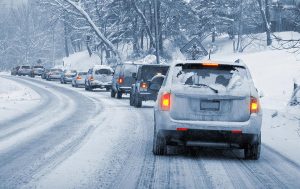If you travel in winter you may be confronted by some unexpected things such as snow, ice, power outages, and more. If you travel by car, you could hit traffic delays, accidents, and breakdowns. Experts report that extreme cold kills faster than extreme heat, yet many people know little about extreme cold preparedness.
Winter Gear
Appropriate clothing is important when going out into extreme temperatures, even if your intention is to go to the grocery store. Wearing layers protects you from wind and snow as well as more dangerous problems like hypothermia. Hypothermia means that your body loses heat faster than it can make it. Extreme cold leads to stress on the nervous system, heart, and other organs.
Winter gear should include several layers of clothing made of waterproof or insulated materials to stay dry and preserve body heat. Synthetic fabrics like polyester or natural materials like wool are best for base layers; outer layers should be weatherproof against wind, rain, and snow.
Driving in Bad Weather
Weather experts warn drivers to stay inside when storms or extreme temperatures are in the forecast. If you must travel in bad weather, let someone know your departure and arrival times, along with your route. A mechanic should check your car to make sure that the brakes and exhaust are functioning well, that your tires are adequate, and that all fluids, including antifreeze, are full. Carry additional washer fluid to combat slush on the highways.
Emergency gear should include:
- First-aid kit
- Thermal blanket
- Compass
- Kitty litter or sand for traction
- Water
- Tire chains
- Food
- Flashlight
- Batteries
- Emergency signals/signal flares
- Bright-colored cloth to mark the vehicle in a snowstorm
- Extra boots and gloves
Stranded
If you become stranded while traveling, winter survival dictates that you should stay with your car if at all possible. Leaving your car is dangerous, particularly if the there is a snowstorm, since the chances of being found diminish. Your car provides shelter and has heat as long as it has fuel. Run the motor for ten minutes every hour to stay warm. Crack the window to allow for ventilation and, if there is a lot of snow, make sure the car’s exhaust pipe is not clogged.
Tie a bright cloth to the antenna to signal distress.
Shelter
If you must leave your vehicle for some reason, you may need to build a shelter to protect yourself during a snowstorm. Stay as close to your vehicle as possible. A snow wall will create a wind block and help to keep you warm. Stay as visible as possible so that you may be found. If traveling with another person, use body heat to keep warm. Move around as much as possible to prevent frostbite and hypothermia.
